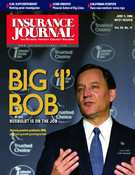The term “standard of care” often is thrown around when dealing with professional liability risks. A professional is regarded as someone who possesses special skills, experience and knowledge, and thus is held to a higher standard of care by law. Generally, the rule is to avoid causing harm to others.
The professional standard of care also extends to those who assist the professional in performing the services (Doctrine of Respondeat Superior) by holding the professional vicariously liable for the actions of his or her subordinates. The standard applies whether or not the subordinates are professionals — as long as the professional has the right to control their actions.
Some professionals must exercise extreme care when dealing with prospective clients to avoid establishing a client–professional relationship where one is not desired. Attorneys, for example, use engagement and disengagement letters routinely, while doctors are expected to disclose important information to their patients and have them complete an “informed consent” form prior to certain procedures and treatments. Most lawyer’s professional liability applications include questions about the use of engagement or disengagement letters, while applications for physicians professional liability ask about informed consent forms and require them to be attached to the application for the underwriters’ review along with protocols.
Most courts now are following national standards of care rather than local ones.
There are basically two ways to establish liability against a professional: Contractual claims and negligence claims (tort violations), or a combination of both.
Contractual claims
Contractual claims have dominated the market for years. Contracts are created to protect the interest of the parties receiving the promises by the professional, and to outline the services the professional will perform on behalf of the client. Contracts are always required to accompany an application for professional liability. So when the professional breaches the terms of the contract, the client — now a plaintiff — can sue the professional for such a breach. The client must establish that the:
- Contract (whether oral or written) existed;
- Professional breached the contract;
- Plaintiff suffered economic loss; and
- That such loss was directly caused by the breach of contract by the professional.
Contractual claims are limited to parties to the contract, and that limitation has somehow encouraged the increase of professional liability claims due to negligence, because virtually anyone can assert a claim against the professional.
It is important to note that contractual claims have advantages, such as possible longer statutes of limitations. Contractual claims usually are less convoluted to prove a breach of contract than a negligence cause of action.
The standard of care comes into play when pursuing a claim for negligence. The elements of a negligence claim are:
- Duty Owed — “professional standard of care expected;”
- Breach of Duty owed or “negligence;”
- Proximate Cause (causal connection between the professional’s conduct and the injury suffered by the plaintiff);
- Damage must result from the professional’s act, error or omission.
The distinction to note under a professional liability claim for negligence, as opposed to that of an ordinary person, is that the law expects the professional to abide by a certain professional standard of conduct. The test usually applied is whether another prudent member of the same profession, given the same circumstances, could have foreseen that the injury would result from the conduct of the professional and/or whether the professional could have avoided it by acting differently.
Ordinary negligence deals with what a reasonable person could have done given the same circumstances and may deal with a “slip and fall” on the insured’s premises due to slippery conditions, for example.
Both must prove the four elements mentioned above.
Because of the professional standard of care element, negligence claims are more difficult to prove and often require the testimony of expert witnesses, introduction of authoritative journals or professional manuals of conduct, depending on the professional, etc. Negligence claims, however, offer a greater potential for recovery than contractual claims. Intangibles such as pain and suffering can be awarded. The latter is normally attributed to those claims becoming the plaintiff’s — and their attorneys’ — preferred cause of action.
Standards of care deal with the duty to use a degree of care that would have been used under similar circumstances by a prudent professional who is duty-bound to perform the service in question. As insurance agents and brokers, duties to clients include loyalty, obedience, accounting, disclosure and reasonable care. Doctors, architects and attorneys have traditionally been regarded as professionals, but nowadays, virtually all providers of services are under a legal duty to perform according to certain standards as they hold themselves as specialists or experts in the rendering of their services to the public for a fee — whether their services require special licensing or not.
Under the duty of reasonable care, the insurance professional must review the prospect’s needs and recommend coverages, such as professional liability or others, when there is a need for them. The prospect relies on the insurance professional for advice.
Rocio L. Orta is a professional liability specialist with Western Security Surplus Insurance Brokers in Pasadena, Calif.
Topics Claims
Was this article valuable?
Here are more articles you may enjoy.


 FBI Says Chinese Hackers Preparing to Attack US Infrastructure
FBI Says Chinese Hackers Preparing to Attack US Infrastructure  Investment Funds File New Suits Over Lighthouse Insurance Collapse in 2022
Investment Funds File New Suits Over Lighthouse Insurance Collapse in 2022  JPMorgan Client Who Lost $50 Million Fortune Faces Court Setback
JPMorgan Client Who Lost $50 Million Fortune Faces Court Setback  Why New York’s Attorney General Objects to Trump’s Bond Insurer
Why New York’s Attorney General Objects to Trump’s Bond Insurer 


